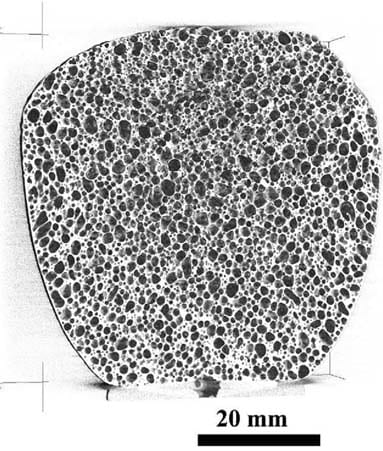Metallic foams are a class of materials that contain a high volume of porosity within a metal or metal alloy matrix (pictured). These materials are typically very lightweight due to the low density but also perform well in terms of mechanical properties. One particular advantage is that a high-strength, low-weight metallic foam could have comparable mechanical properties to advanced lightweight alloys, but produced at a fraction of the cost, making them desirable for automotive and aerospace components.
John Banhart, of the Helmholtz Zentrum Berlin, Germany, is an authority in the field and has written a comprehensive review of the history, development, current status and future of metallic foams in Advanced Engineering Materials. Beginning with the very early development of foams at the beginning of the last century, he discusses the many intriguing breakthroughs and false-starts, many of which are only reported in the patent literature, before discussing the various methods that are currently used to produce metallic foams. A review of important books, review papers and conference proceedings is also given. The article is essential reading, especially for those starting their research career in metallic foams.


















